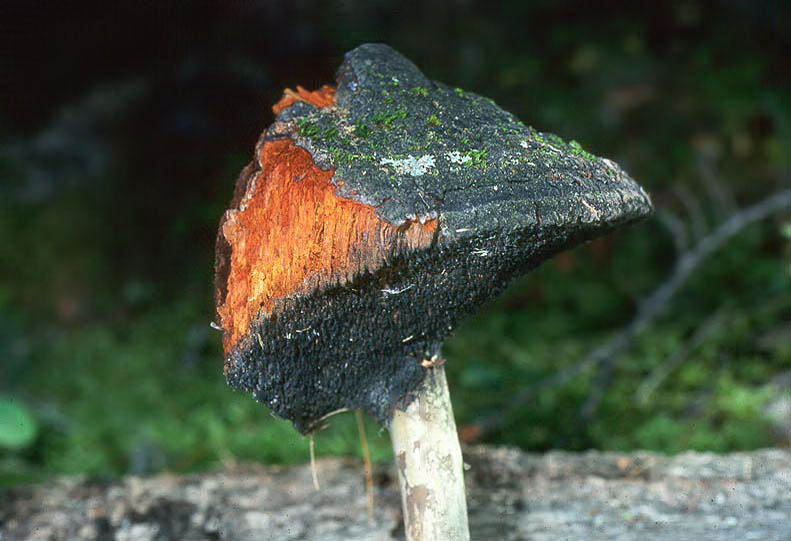
© Michael Beug
Danny’s DNA Discoveries – Echinodontiaceae of the PNW
by Danny Miller
|
|
Danny’s DNA Discoveries – Echinodontiaceae of the PNW
|
|
Introduction
abundant common uncommon rare - colour codes match my Pictorial Key and are my opinions and probably reflect my bias of living in W WA. Rare species may be locally common in certain places at certain times. |
|
Echinodontium
Echinodontium tinctorium AK - Technically, I suppose this mushroom is both a toothed fungus and a polypore fungus, as it is a hard conk with short, thick spine-like projections on the underneath. It seems to prefer hemlock and sometimes true fir. At first it seems like a very dark blob, but when you cut it open it is bright rusty orange-red inside and can be used for dyeing clothing. It was described from Alaska. There's a little bit of genetic variation here - of three North American sequences, one differs by 2bp and one differs by 4bp in ITS. We have no local sequences. Echinodontium tinctorium © Michael Beug and Noah Siegel |
|
Amylostereum
Amylostereum chailletii EU - It's hard to imagine a close genetic relationship between Echinodontium and the mostly resupinate crust Amylostereum, but there is one. It's rarely reported, but that doesn't mean it's rare, because frankly, nobody is really looking for it. It's most often a smooth-surfaced, resupinate lilac-greyish brown crust on conifers, and will be very difficult to identify in that state. When it reflexes out creating a small dark brown cap, it is easier to recognize, as there are far more completely resupinate crust fungi than there are those that have a cap. Then, it is most easily mistaken for Veluticeps, which is a similarly coloured partially reflexed conifer crust. Our one local sequence from BC is only 3bp different in ITS than most European sequences, so we probably do have the European species here. Some have wondered if the similar species Amylostereum areolatum is found here too, so be on the lookout for it. probable Amylostereum chailletii © Jens Petersen mycokey.com |